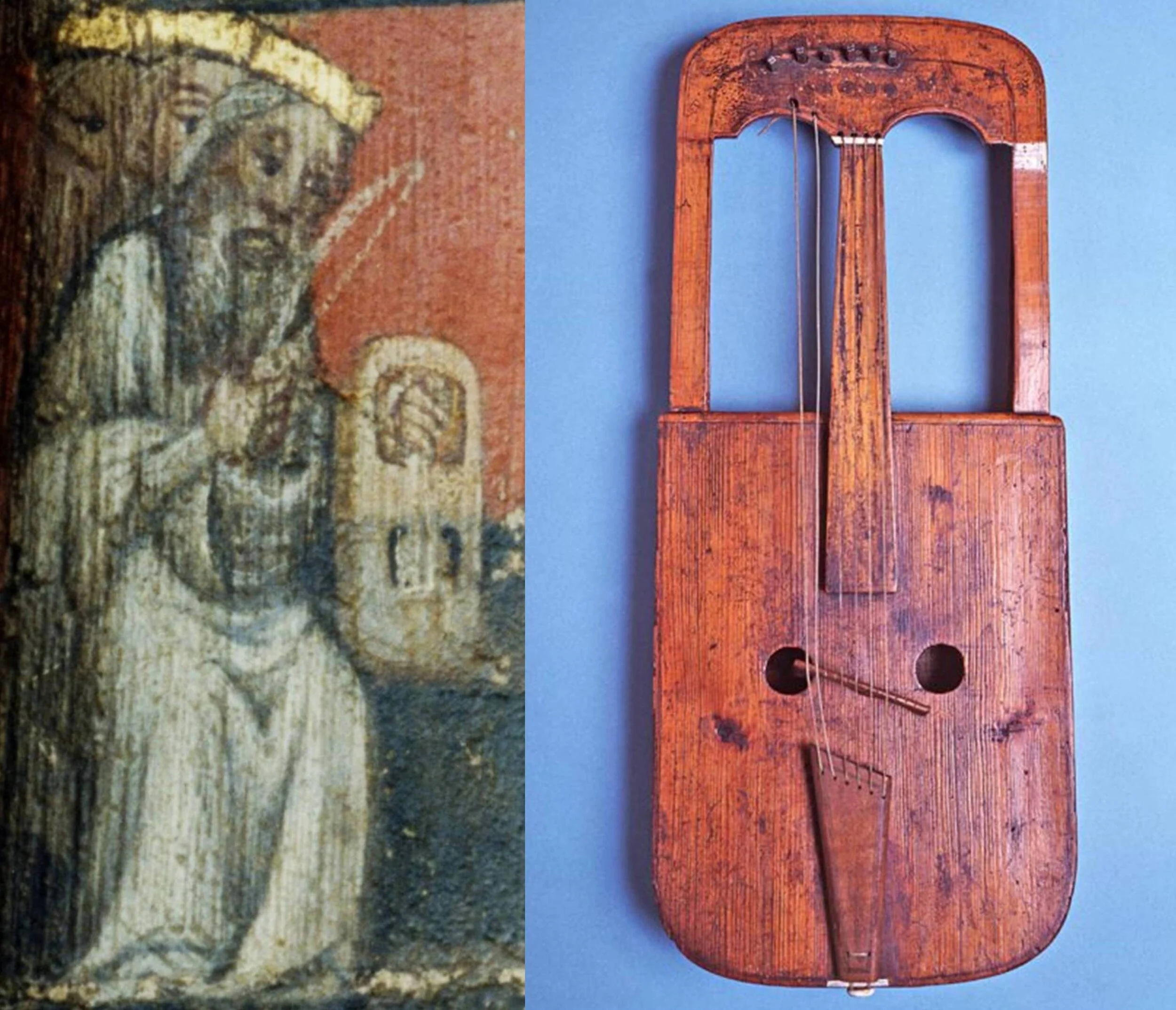Apparently vowel-less, although ‘w’ used that way in Welsh, this is a bowed medieval lyre with a flat bridge ideal for playing chords and melodies, with a design dating back to Roman times and reached peaked popularity in the Middle Ages. Pronounced ‘crooth’, it was originally a plucked instrument as part of the lyre family, but was also the forerunner to the violin as a bowed instrument. In the Middle Ages where it was more of a higher art instrument rather than for more popular folk tunes, to accompany the declaration of poetry. When the violin became increasingly popular in the 17th and 18th century, the crwth declined. It and has unusual shape in that the left had must reach through the back of the U-shaped body, tuning in that it doubles up notes to allow for drone chords or fingering to allowing different chords, and each of the strings have Welsh names. Traditional tuning is gg´c´c´´d´d´´, originally reported of that tuning in Edward Jones’s book, Musical and Poetical Relicks of the Welsh Bards; published in London in 1784, but different players pick their own tunings.
Medieval crwth
Cass Meurig, who lives near Bala, north Wales, near Snowdonia, is one of the best players around and in this video, explains and demonstrates this instruments strangely beautiful and eerie sound, slightly softer and fuller in tone than the violin.
The medieval poet Gruffydd ap Dafydd ap Hywel as 'in the hand a hundred voices' (yn y llaw yn gan llais'), referring to the rich sound of six strings sounded simultaneously in harmony.
In this video, Ryan Koons of the traditional Celtic and Nordic music ensemble Wherligig performs "The Wren" on a crwth built by Ken Koons:
And another player, Glenn Braun, demonstrates with a tune called Black Pepper, with a tuning of g (matching the in the low string on a violin) and and then another g one octave up as well as c" c', d' (d on the violin) and above it another d":
Cass Meurig has released music that includes her playing the crwth, as well as the violin and singing in Welsh:
So then, any more crwth tunes come to mind? Feel free to share any further ones from songs, or even film, art or other contexts in comments below.
You can also get in touch the contact page, and also visit us on social media: Song Bar Twitter, Song Bar Facebook. Song Bar YouTube. and Song Bar Instagram. Please subscribe, follow and share. New to comment? It is quick and easy. You just need to login to Disqus once. All is explained in About/FAQs ...
Song Bar is non-profit and is simply about sharing great music. We don’t do clickbait or advertisements. Please make any donation to help keep the Bar running:


